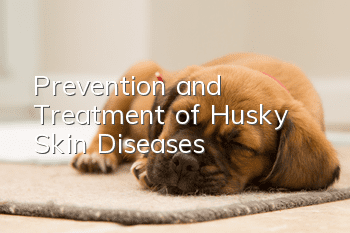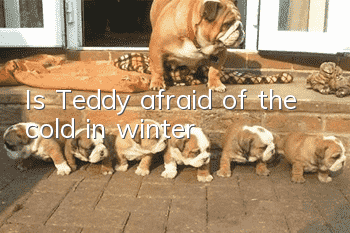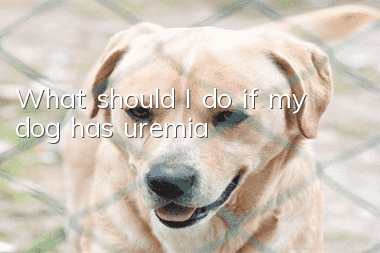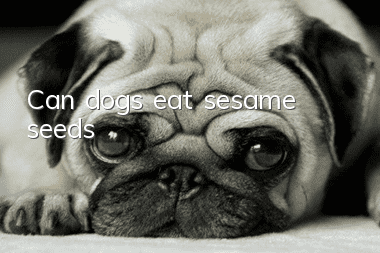Prevention and Treatment of Husky Skin Diseases

Dermatomycosis, or surface mycosis, refers to fungal diseases in which fungi infect the epidermis and its accessory structures (hair, horns, and claws). There are many types of pathogenic fungi, but the main cause of skin mycosis in Huskies is Microsporum canis. Sometimes Trichophyton mentagrophytes, Trichophyton verrucosum and Microsporum gypsum can also be isolated. Dermatophytes are extremely resistant to external factors, especially dryness.
When exposed to sunlight or at 0C, it can survive for several months. Fungi attached to dander on kennel equipment, posts, etc. can still maintain their infectivity even after 5 years. However, the fungi in the bedding and soil can be eliminated by other biological factors. Only the younger Microsporum gypsum, Trichophyton mentagrophytes, etc. can reproduce in the soil. The spread of canine dermatomycosis is mainly through contact between animals or through contaminated objects. When the number of dogs is large and dense, it can also be transmitted through the air. External parasites, such as lice, fleas, flies, mites, etc., also play an important role in the transmission of L. In addition, house mice and mice play a certain role in the spread of Trichophyton mentagrophytes, and soil plays a role in the spread of gypsum-like Microsporidiosis.
General prevention and treatment methods are as follows:
First, keep your dog’s skin clean and hygienic, and check the coat frequently for ringworm spots and scales.
Second, strengthen the management of dogs and avoid contact with sick dogs.
Third, if a sick dog is found, it should be isolated and treated in time. Griseofulvin 25-50 mg/kg body weight, taken orally in 2-3 times for 3-5 weeks, has a good effect on this disease. While using systemic therapy, clipping the hair of the affected area and applying nystatin or polyaldehyde nystatin sodium ointment can make the dog recover within 2 to 4 weeks.
Fourth, during treatment, special attention should be paid to the disinfection of kennel equipment, dog tying posts, etc. 2% to 3% sodium hydroxide solution, 5% to 10% bleaching powder solution, 1% peracetic acid, 0.5% chlorhexidine solution, etc., all have good fungicidal effects and can be used. Deep disease Deep mycosis refers to an infection caused by fungi that invade the skin, mucous membranes and internal organs. There are many types of pathogenic bacteria. These pathogenic bacteria are widely found in soil, animal feces, and milk. Dogs are mainly infected through contact with contaminated soil or through the respiratory tract and digestive tract. Only a few fungi are contagious through contact. Deep mycosis can occur in various organs in the body, and its lesions are characterized by: granulomatous inflammation, necrosis, abscesses, ulcers, fistulas, connective tissue hyperplasia, and nodule formation. The widespread addition of antibacterial drugs to feed may be an important cause of deep mycosis in dogs.
In addition, you can also give your dog some hair-beautifying and skin-care nutrients, such as MAG seaweed powder. It is rich in vitamin B and vitamin E, which can tighten the skin, help prevent skin diseases, inhibit the occurrence of dandruff, and promote the treatment of skin problems. recover.
Recommendations
Aineng Pet Odor Eliminating Disinfectant can effectively remove body odor/feces odor and other odor molecules! Effective in treating skin diseases caused by fungi/bacteria! Can kill parvovirus/canine distemper virus/coronavirusetc!
It is edible grade for pets, does not contain fragrances, does not contain chemicals, can be sprayed directly, and is harmless to human pets!
Consultation: 13028809308 (WeChat synchronization)
Scan the QR code on WeChat to enter the purchase
- Why do dogs like to sleep under the bed?
- What should I do if my puppy keeps barking in the cage?
- How to train a German Shepherd? The best time to train a German Shepherd!
- Will dogs with gastrointestinal problems have bad breath?
- What should I do if my French Bulldog eats too much and has diarrhea?
- How many meals does Harry the dog eat a day?
- 5 minutes to quickly understand the pros and cons of pet neutering
- Dog training is ineffective, let’s take a look at these misunderstandings!
- Can dogs wear clothes? In fact, there are hidden dangers in wearing clothes for dogs!
- Can pet dogs eat plums?



